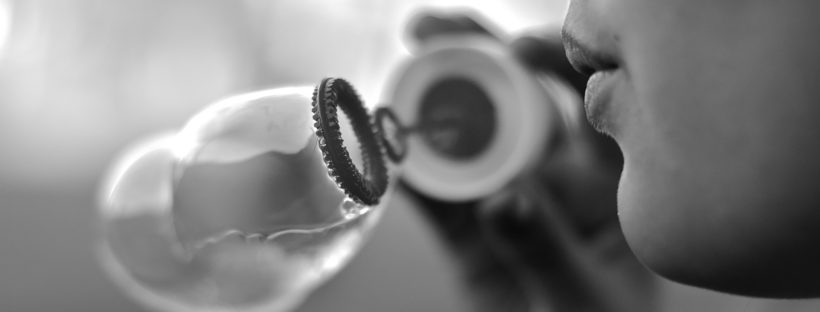There are still multiple theories to explain what causes the pop/click that you sometimes hear when an osteopath, chiropractor or physiotherapist uses a joint manipulation (or, “HVLA”) technique. However, one thing I can confidently tell you is that we’re not “cracking bones” like a lot of my patients seem to think when I first meet them!
A gaseous bubble collapsing?
Unsworth et al in 1971 took radiographic images of MCP joints (your knuckles) before and after traction manipulations. Unsworth et al described a rapid increase in joint volume, which they hypothesized dropped the partial pressure within the joint to below that of carbon dioxide dissolved in the synovial fluid. This pressure change resulted in a phase change from liquid synovial fluid to gas, forming a bubble within the center of the joint space and causing an audible popping sound upon collapse.
The elastic recoil of the synovial membrane?
However in 1995, Brodeur proposed that the cavitation process was generated by an elastic recoil of the synovial capsule as it “snaps back” from the capsule-synovial fluid interface. More specifically, Brodeur believed the capsular ligaments were drawn inward while the joint was being gapped to maintain a constant joint volume, but the capsular ligaments eventually reach a critical limit and snap back from the synovial fluid, thereby causing popping or cracking sounds.
Tribonucleation Theory?
Most recently in 2015, Kawchuck et al used real-time cine MRI to investigate the mechanism of the audible popping during MCP distraction manipulations. Contrary to what has traditionally been accepted, as the traction forces increased, MR images revealed the cavity inception occurred simultaneously with the joint separation and the popping sound production. These results offer experimental evidence that the audible popping or cracking sounds during HVLA thrust manipulation are associated with cavity inception rather than collapse of a pre-existing bubble. These observations are consistent with the tribonucleation theory, a known process where opposing surfaces resist separation until a critical point where they then separate rapidly, creating a phase change from liquid to gaseous cavities.
Despite the different theories of what causes the popping sound, there is consensus about a 15-30 minute refractory period afterwards where you can’t reproduce the sound from the same joint.
Notably, all of these studies involved knuckle joints not spinal facet joints.
In 2003, Cascioli et al used CT scans and X-rays to see if facet joint volume or density changed in 4 scenarios: premanipulation, premanipulation with traction, post manipulation, and post manipulation with traction. Importantly, they reported no changes in facet joint space and there was no evidence of intra-articular gas immediately after HVLA thrust manipulation. Therefore, Cascioli reintroduced the Capsular Detonization Theory that was originally proposed by Sandoz in 1969, whereby collagen fibers of the joint capsule are thought to be stretched beyond their threshold and rapidly lengthened without being torn.
As an osteopath I use joint manipulation techniques quite sparingly and only when I feel that it’s the best way to achieve tissue change. I only use techniques that are quite gentle and get results every time and most importantly I would always ask for a patient’s consent beforehand.
If you would like to know more about how osteopathy can benefit you, please get in touch at lornaroseosteopath@gmail.com.
References:
- Unsworth A, Dowson D, Wright V. A bioengineering study of cavitation in the metacarpophalangeal joint. Ann Rheum Dis. 1971; 30: 348-58
- Brodeur R. The audible release associated with joint manipulation. J Manipulative Physiol Ther. 1995;18(3):155-64.
- Kawchuk GN, Fryer J, Jaremko JL, Zeng H, Rowe L, Thompson R. Real-Time Visualization of Joint Cavitation. PLoS ONE. 2015; 10(4)
- Cascioli V, Corr P, Till AG. An investigation into the production of intra-articular gas bubbles and increase in joint space in the zygapophyseal joints of the cervical spine in asymptomatic subjects after spinal manipulation. J Manipulative Physiol Ther. 2003; 26(6): 356–364.
- Sandoz R. The significance of the manipulative crack and other articular noises. Ann Swiss Chiropr Assoc 1969:4:47- 68.
- Dunning J. Osteopractor, Spinal Manipulation. 2016; https://spinalmanipulation.org/2016/06/21/audible-popping-during-spinal-manipulation-plausible-mechanisms-and-clinical-relevance/
